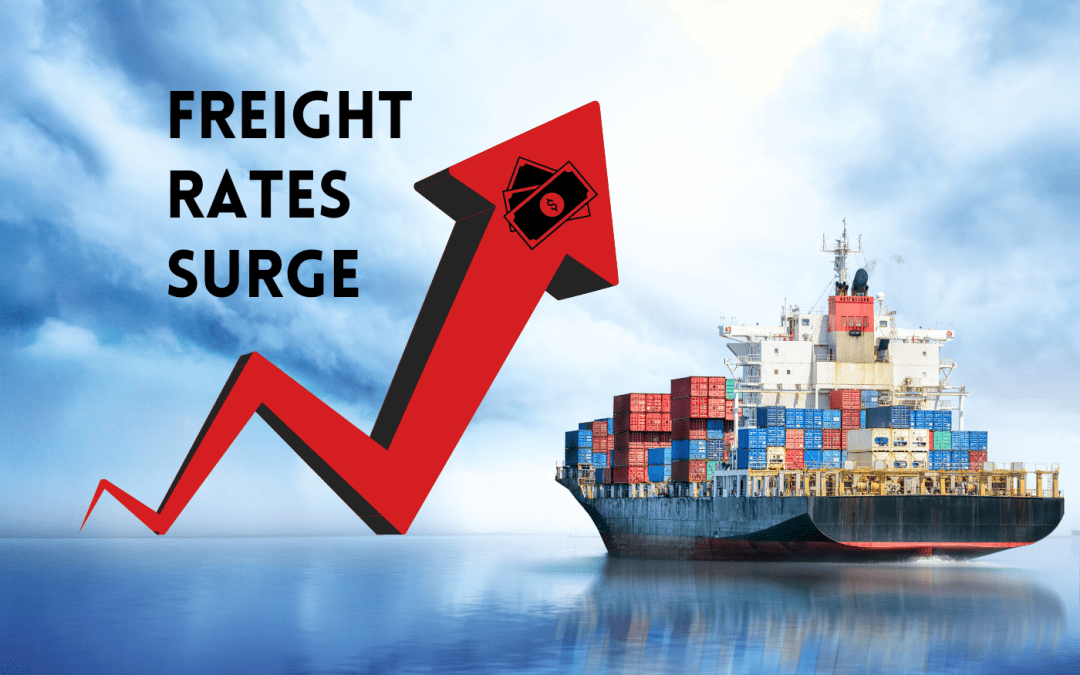FREIGHT RATES SURGING
The latest reports indicate that the cost of shipping goods from China has reached nearly $10,000 per 40ft container, a substantial increase from recent rates. Various factors, including heightened demand, supply chain disruptions, and ongoing challenges within the shipping industry, have caused this surge. These increased costs will likely affect various sectors, leading to noticeable price hikes in retail products.
IMPACT ON RETAIL PRICES
According to a report by the BBC, the rise in freight rates will likely lead to higher prices on the high street as businesses face increased costs for importing goods. Retailers will likely pass these additional expenses onto consumers, resulting in noticeable price hikes for a range of products. This situation is particularly concerning as the global economy continues to fight inflation.

FACTORS CONTRIBUTING TO THE SURGE
Several key factors are driving the increase in shipping costs:
> HIGH DEMAND
There has been a surge in demand with the onset of an early peak season and a cautious rebound in consumer spending. This increased demand has put additional pressure on shipping routes and container availability.
> CONTAINOR SHORTAGES
A global shortage of shipping containers has further exacerbated the situation. With containers in short supply, shipping lines are charging premium rates to transport goods.
> PORT CONGESTION
Major ports around the world, particularly in the United States, Europe are experiencing significant congestion. This has led to delays and increased costs as ships wait longer to unload their cargo.
> GEOPOLITICAL TENSIONS
Trade policies and geopolitical tensions have also played a role in disrupting supply chains and contributing to higher shipping costs.
INDUSTRY RESPONSES
In response to the escalating freight rates, businesses are exploring various strategies to mitigate the impact:
> DIVERSIFYING SUPPLIERS
Companies are seeking to diversify their supplier base to reduce reliance on Chinese manufacturing and shipping routes.
> OPTIMISING SUPPLY CHAINS
Efforts are being made to streamline supply chains and improve efficiency to counterbalance the increased costs.
> ADJUSTING PRICING STRATEGIES
Retailers are evaluating their pricing strategies to absorb some of the additional costs while maintaining competitiveness in the market.
CONSUMER IMPLICATIONS
For consumers, the increase in shipping costs will likely be felt through higher prices on everyday goods. Products heavily reliant on imports from China, such as electronics, clothing, and household items, will likely see the most significant price increases. This situation comes at a time when many households are already grappling with financial challenges due to broader economic conditions.
OUTLOOK AND FUTURE CONSIDERATIONS
While the current surge in freight rates is concerning, industry experts are hopeful that the situation will stabilise over time. However, the timeline for this stabilisation remains uncertain, as ongoing challenges such as geopolitical tensions and supply chain adjustments continue to influence global trade dynamics.
Businesses and consumers alike will need to remain adaptable and prepared for potential fluctuations in the market. In the meantime, close monitoring of shipping costs and proactive measures to manage supply chain disruptions will be crucial for navigating this complex landscape.
CONCLUSION
The unprecedented rise in spot freight rates from China is a stark reminder of the interconnectedness of the global economy and the far-reaching impacts of supply chain disruptions. As businesses and consumers brace for higher prices, the focus will be on finding innovative solutions to mitigate the effects and ensure the continued flow of goods in a challenging environment.
For AMCO, staying informed about these developments and proactively addressing the associated challenges will be key to maintaining cost-efficient and reliable supply chains for its customers in the face of evolving market conditions.
GET IN TOUCH
Need a world-class end-to-end logistics solution? Talk to the experts.

